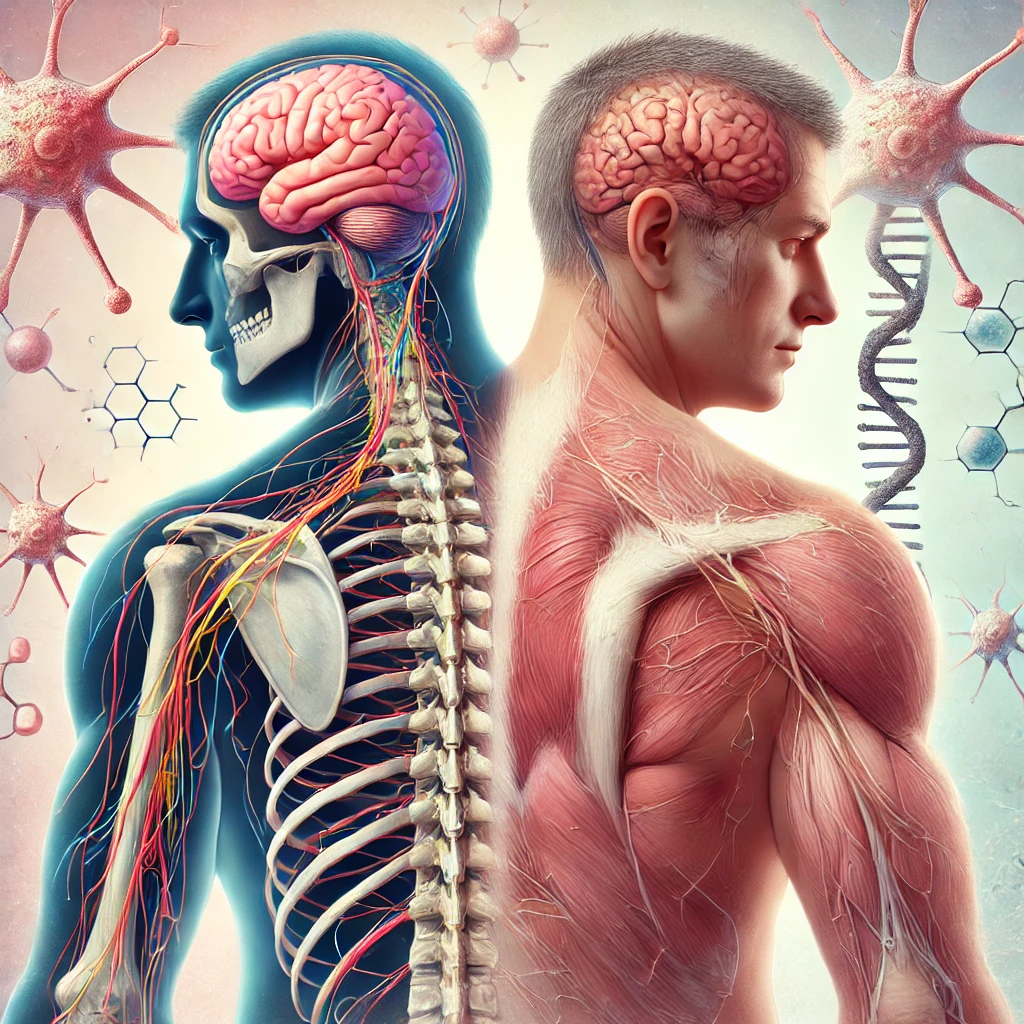Amyotrophic Lateral Sclerosis (ALS): A Comprehensive Overview
1. What is ALS?
Amyotrophic Lateral Sclerosis (ALS) is a progressive neurodegenerative disease that affects nerve cells in the brain and spinal cord, leading to muscle weakness, loss of motor control, and eventually paralysis. It is also known as Lou Gehrig’s Disease, named after the famous baseball player who was diagnosed with it in 1939.
2. How Does ALS Affect the Body?
ALS specifically targets motor neurons, which are responsible for sending signals from the brain to muscles throughout the body. When these neurons die, the muscles they control weaken, leading to difficulties with movement, speech, swallowing, and eventually breathing.
3. Symptoms of ALS
Symptoms often start gradually and worsen over time. They include:
- Muscle weakness in hands, legs, feet, or arms
- Difficulty speaking (slurred speech)
- Problems swallowing (dysphagia)
- Muscle cramps and twitching (fasciculations)
- Difficulty walking or maintaining balance
- Progressive paralysis
- Respiratory issues in later stages
4. Causes of ALS
The exact cause is not fully understood, but ALS may be linked to:
- Genetics: Around 5-10% of ALS cases are inherited (familial ALS).
- Environmental Factors: Some studies suggest exposure to toxins, heavy metals, or head trauma could increase the risk.
- Abnormal Protein Buildup: Misfolded proteins in neurons may contribute to ALS.
- Glutamate Toxicity: High levels of glutamate (a neurotransmitter) can damage neurons.
- Immune System Dysfunction: The immune system may mistakenly attack motor neurons.
5. Who is at Risk?
- Age: Most cases develop between 40 and 70 years old.
- Gender: Slightly more common in men than women.
- Family History: A family history of ALS increases risk.
- Military Veterans: Higher incidence in veterans, possibly due to exposure to chemicals or head injuries.
6. How is ALS Diagnosed?
There is no single test for ALS. Doctors diagnose it based on:
- Neurological exams to check muscle strength and reflexes.
- Electromyography (EMG) to assess nerve function.
- MRI scans to rule out other conditions.
- Blood and spinal fluid tests to exclude other diseases.
7. Treatment and Management
There is no cure for ALS, but treatments can slow progression and improve quality of life:
- Medications
- Riluzole (Rilutek) – Slows progression by reducing glutamate levels.
- Edaravone (Radicava) – May help slow decline in some patients.
- Physical Therapy to maintain mobility.
- Speech Therapy to assist with communication.
- Breathing Support as the disease progresses.
- Nutritional Support to manage swallowing difficulties.
8. Life Expectancy and Prognosis
- The disease progresses at different rates in different people.
- Average life expectancy after diagnosis is 2 to 5 years, but some people live much longer (e.g., Stephen Hawking lived for decades with ALS).
- Most deaths occur due to respiratory failure.
9. Ongoing Research and Hope for the Future
Scientists are working on:
- Stem cell therapy to repair damaged neurons.
- Gene therapy to target genetic mutations.
- New drugs that may slow progression or stop ALS.
10. ALS Awareness and Support
Organizations like the ALS Association (ALSA) and the Muscular Dystrophy Association (MDA) offer support for patients and fund research. The Ice Bucket Challenge in 2014 raised millions for ALS research.
Conclusion
ALS is a devastating disease, but advances in research are providing hope for better treatments. If you or someone you know is affected, early intervention and a strong support system can improve quality of life.
Would you like information on ALS-related charities, clinical trials, or patient support networks?

